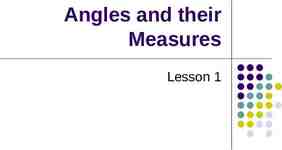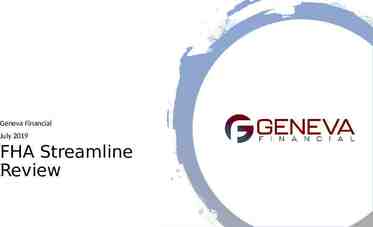The Healing Place of Wake County The Statewide Conference on Offender
34 Slides6.43 MB
The Healing Place of Wake County The Statewide Conference on Offender Reentry “Shaping the Future of Transition” May 1 – 3, 2007
Our Mission To offer innovative recovery and rehabilitation to homeless, alcoholic, and chemically dependent men and women through a continuing mutual help program that kindles their desire to return to a meaningful and productive life.
The Healing Place Model The Healing Place of Wake County is a replication of a nationally recognized model in Louisville, KY. 1998 – The Healing Place in Louisville was a recipient of the Models That Work Award given by a joint partnership between Human Resources and Services Administration and the Department of Health and Human Services.
Cost and Outcome Admission Criteria Cost Wake County resident Homeless 18 It costs less than 29.00 per day for a client to be at The Healing Place Outcome 60% of the clients who complete the program are sober 1 year later Approximately 10% of those who relapse regain their sobriety
The Healing Place Model The Healing Place model most closely resembles a Social Model Recovery program. Social Model Recovery programs emphasize: Recovery grounded in the principles of Alcoholics Anonymous Peer modeling Personal responsibility Accountability Experiential vs. professional base of authority
Guiding Principles of THPWC Certain beliefs support THPWC: Attraction is critical to the success of the client in this model Hand up, not hand out program “You do a little, we’ll do a little. You do a lot, we’ll do a lot.” Services on demand As many times as it takes Clients are always given an opportunity to work their way back into the program.
Men’s Facility
Women’s Facility
Number of Beds Men’s Overnight Detox (SUC) OTS I 30 OTS II 10 Phase I Phase II Total 180 Women’s Facility 36 22 46 36 20 on White Flag nights Facility Overnight Detox (SUC) OTS I 16 OTS II 5 Phase I Phase II Total 99 12 10 32 24 7 on White Flag nights
The Healing Place Program Transitional Program Recovery Program Motivational Program Program Overnight Emergency Shelter Non-Medical Detoxification
Men’s Overnight-Emergency Shelter
Overnight-Emergency Shelter Is based upon simple human entitlement Each person entitled to food, shelter and clothing, regardless of their commitment to getting sober or ending their homelessness Shelter is provided one night at a time Beds are provided on a “first come, first serve basis” Beds are not guaranteed the next night Is a “wet shelter” No one is turned away if intoxicated or under the influence of other drugs
Women’s Overnight-Emergency Shelter
The Healing Place Program Transitional Program Recovery Program Motivational Program Program Overnight Emergency Shelter Non-Medical Detoxification
Women’s Sobering Up Center
Sobering Up Center Non-medical detoxification Easily accessible, cost-efficient services on demand Safe withdrawal Attract into the recovery program Community Assistance Program (CAP Van) 48-hour against staff advice policy If a client leaves against staff advice they are not eligible for the Sobering Up Center for 48-hours Client is eligible to access the overnight emergency shelter
Men’s Sobering Up Center
The Healing Place Program Transitional Program Recovery Program Motivational Program Program Overnight Emergency Shelter Non-Medical Detoxification
Off The Street I and II Motivational Bed track guaranteed and place to keep belongings in exchange for attending Recovery Dynamics group sessions 1 - 4 Movement at this stage of the program is based upon meeting attendance (AA/CA/NA) “Trudging” to classes is essential Willingness is the key
Men’s Off The Street “Pod”
Women’s Off The Street “Pod”
Off The Street II OTS II Begin written assignments that correspond to group sessions 1 – 4 Work in kitchen every third day Phase I clients assigned to take clients to outside AA/CA/NA meetings at night
The Healing Place Program Transitional Program Recovery Program Motivational Program Program Overnight Emergency Shelter Non-Medical Detoxification
Men’s Phase I Room
Phase I Recovery program Attend remaining Recovery Dynamics classes (sessions 5 – 28) Regular job assignment Kitchen, buildings & grounds, security, laundry, clothing closet Participate in community process Complete Life Skills class through WakeTech Commitment is the key
Women’s Phase I Room
The Healing Place Program Transitional Program Recovery Program Motivational Program Program Overnight Emergency Shelter Non-Medical Detoxification
Phase II Phase II Transitional Program Goals are to find employment, save money and prepare for independent living Complete Ready To Rent curriculum Reunification efforts with children Some clients will volunteer to teach the Recovery Dynamics classes for a 90-day period
Women’s Phase II Room
Men’s Phase II Room
The Healing Place Program Silver Chip Alumni Clients who have completed the Phase II program and moved out with the approval of their peers Has privileges of returning to THPWC to visit with clients, to teach classes, have meals and participate in other activities.
Men’s Facility Courtyard
Observations Those who have come directly to THPWC from DOC, and have been successful in our program, share the following characteristics: Incarcerated for less than one year Are in the “initiating stage” of recovery Have had previous recovery attempts
Additional Clients







































